Welcome to my comprehensive guide on manual fruit and vegetable juicers. If you’re looking to incorporate more fresh juices into your diet, a manual juicer is a fantastic choice. With their simple operation and versatility, these juicers allow you to extract delicious and nutritious juices from a wide variety of produce.
Whether you’re a fan of refreshing citrus juices or vibrant green blends, a manual juicer can handle it all. From apples and berries to beets and kale, you’ll be amazed by the range of fruits and vegetables you can juice with this handy kitchen appliance.
In this guide, I will provide you with valuable information on choosing the right manual juicer, preparing your produce for juicing, and maximizing the efficiency of your juicing process. Let’s dive in and explore the wonderful world of manual fruit and vegetable juicers!
Key Takeaways:
- Manual fruit and vegetable juicers offer a simple and effective way to incorporate fresh juices into your diet.
- You can juice a wide variety of fruits and vegetables with a manual juicer, from citrus fruits to leafy greens.
- Properly preparing your produce by chopping and peeling it ensures optimal juicing results.
- If you plan on juicing a lot of leafy greens, consider investing in a cold-press juicer for higher juice yield.
- Make cleanup easier by lining the pulp collection bin of your juicer with plastic wrap.
What Can You Juice?
When it comes to manual fruit and vegetable juicers, the options are endless. You can juice a variety of fruits like apples, berries, citrus fruits, and melons, along with delicious vegetables like beets, broccoli, carrots, celery, kale, spinach, and tomatoes. With a manual juicer, you have the flexibility to extract juice from a wide range of produce, allowing you to create refreshing and nutritious concoctions to suit your taste and health goals.
Here’s a breakdown of some popular fruits and vegetables for juicing:
Fruits for Juicing:
| Fruit | Health Benefits |
|---|---|
| Apples | Rich in antioxidants, vitamins, and dietary fiber |
| Berries (Strawberries, Blueberries, Raspberries) | Packed with vitamins, minerals, and antioxidants |
| Citrus Fruits (Oranges, Lemons, Grapefruits) | Excellent source of vitamin C and other essential nutrients |
| Melons (Watermelon, Cantaloupe, Honeydew) | Hydrating and refreshing, loaded with vitamins A and C |
Vegetables for Juicing:
| Vegetable | Health Benefits |
|---|---|
| Beets | Rich in antioxidants, vitamins, and minerals, supports liver detoxification |
| Broccoli | Packed with fiber, vitamins, and minerals, supports healthy digestion |
| Carrots | High in beta-carotene, vitamin A, and antioxidants, promotes eye health |
| Celery | Low in calories, hydrating, and rich in vitamins and minerals |
| Kale | Powerhouse of nutrients, including vitamins A, C, and K, calcium, and iron |
| Spinach | Loaded with iron, folate, and vitamins A and C, supports bone and heart health |
| Tomatoes | High in antioxidants, vitamins, and lycopene, promotes skin health |
Experiment with different combinations of fruits and vegetables to create unique flavors and nutrient profiles in your juices. Let your creativity flow as you explore the wonderful world of juicing!
Nothing beats the taste and freshness of homemade fruit and vegetable juices. They are not only delicious but also provide a nutrient boost to your diet. – Juicing Enthusiast
Prep Your Produce
Properly preparing your produce is essential for getting the best results with your manual juicer. To ensure a smooth juicing process, follow these steps:
- Chop your fruits and vegetables: Before juicing, it’s important to chop your produce into manageable pieces that fit through the juicer’s small food chute. This will prevent any clogging or jamming during the juicing process.
- Peel citrus fruits: For citrus fruits like oranges and lemons, it’s recommended to peel away the tough outer skins, peels, and pith. This is crucial to avoid adding any bitter flavors to your juice.
- Remove seeds and hard pits: To protect your juicer and prevent any bitter taste in your juice, make sure to remove any seeds and hard pits from your fruits and vegetables. These can potentially damage the juicer and affect the taste of your final product.
By taking the time to properly prepare your produce, you’ll ensure a smoother juicing process and a more delicious and nutritious juice.
Expert Tip:
When juicing leafy greens like spinach or kale, it’s a good idea to roll them up tightly before feeding them into the juicer. This will help extract more juice and prevent them from getting stuck inside the juicer.
| Fruit | Preparation |
|---|---|
| Apple | Core and chop into small pieces |
| Berries | Rinse and remove stems |
| Citrus fruits | Peel away tough outer skins, peels, and pith |
| Melon | Remove rind and seeds, chop into chunks |
Consider a Cold-Press Machine
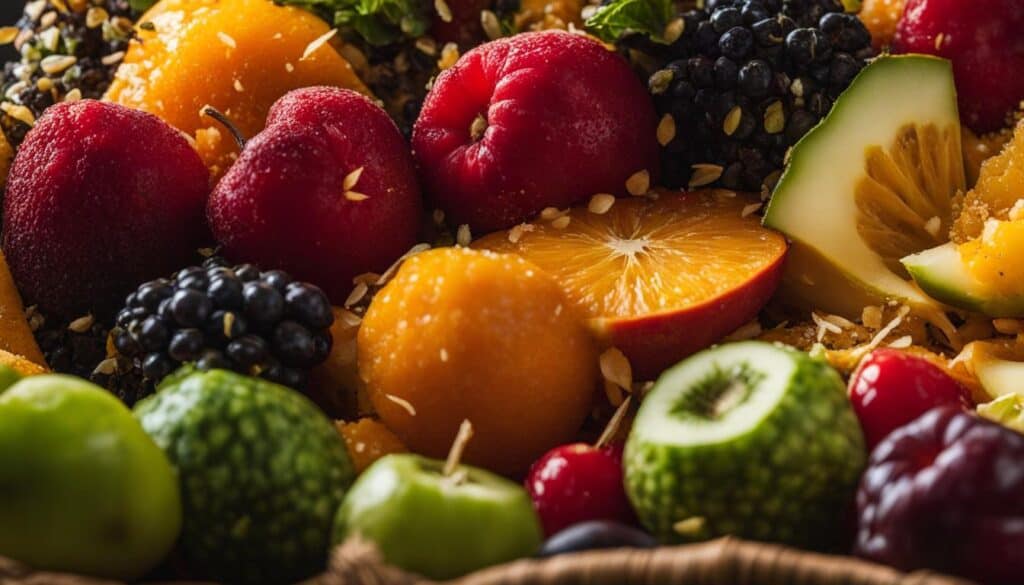
If you’re a fan of juicing leafy greens like kale and spinach, a cold-press juicer is worth considering. While manual juicers are great for processing most fruits and vegetables, they may struggle to extract juice from fibrous greens. Cold-press machines use powerful augers to slowly crush the produce, resulting in higher juice yield and better extraction from tougher ingredients.
Unlike other juicers that rely on high-speed spinning blades, cold-press juicers gently squeeze the juice out of the produce without generating heat. This low-heat process helps to preserve more nutrients and enzymes in the juice, providing you with a healthier and more nutrient-rich beverage.
Why Choose a Cold-Press Juicer?
There are several reasons why a cold-press juicer is an excellent investment for juicing leafy greens:
- Higher juice yield: The slow crushing action of a cold-press juicer ensures that you extract every last drop of juice from your leafy greens. This means you can maximize the amount of juice you get from each ingredient, making it more cost-effective in the long run.
- Richer flavors: Cold-press juicers produce juice that is often richer in flavor compared to other juicers. The slow extraction process allows the flavors of the ingredients to fully develop, resulting in a more vibrant and delicious juice.
- Better retention of nutrients: The gentle squeezing action of a cold-press juicer minimizes the exposure of the juice to heat and oxygen. This helps to preserve the essential vitamins, minerals, and enzymes present in the leafy greens, ensuring that you get the maximum nutritional benefits.
- Less foam and separation: Cold-press juicers produce juice with minimal foam and separation. This means you won’t have to worry about foam or pulp floating on top of your juice, giving you a smooth and enjoyable drinking experience.
| Cold-Press Juicer Benefits | Explanation |
|---|---|
| Higher juice yield | The slow crushing action extracts more juice from leafy greens. |
| Richer flavors | The slow extraction process allows flavors to fully develop. |
| Better nutrient retention | The low-heat process preserves essential nutrients. |
| Less foam and separation | Produces juice with minimal foam and separation. |
Investing in a cold-press juicer will not only enhance your juicing experience, but it will also allow you to enjoy the full benefits of juicing leafy greens. Whether you’re looking to boost your daily nutrient intake or simply enjoy a refreshing and healthy beverage, a cold-press juicer is a valuable addition to your kitchen.
Line Your Pulp Basket
One downside of juicing is the amount of solid waste generated. To make cleanup easier, I have a simple trick for you. Just line the pulp collection bin of your juicer with plastic wrap.
After juicing, all you have to do is lift out the plastic wrap with the pulp and throw it away. This not only eliminates the need for scrubbing but also ensures a quick and hassle-free cleanup process. No more spending extra time trying to remove stubborn pulp from the basket!
Drink Fresh Juice
Freshly made juice is a delight for the senses. The vibrant colors, delicious flavors, and abundant nutrients make it a perfect addition to a healthy lifestyle. To fully enjoy the benefits of fresh juice, it’s best to consume it right away.
The moment you extract juice from fruits and vegetables, they are at their peak in terms of flavor and nutritional value. The enzymes and antioxidants are most potent when consumed immediately, ensuring you get the maximum benefits.
If you find yourself needing to store juice for later consumption, it’s important to take steps to maintain its freshness. Refrigeration is key to slowing down the oxidation process and preserving the quality of the juice. Store your juice in airtight containers and make sure to consume it within 24 hours.
To minimize oxidation and preserve the nutritional value as much as possible, it’s recommended to drink your juice as soon as you can after juicing. Fresh juice is a true delight, and enjoying it at its freshest ensures you get the full experience of its flavors and health benefits.
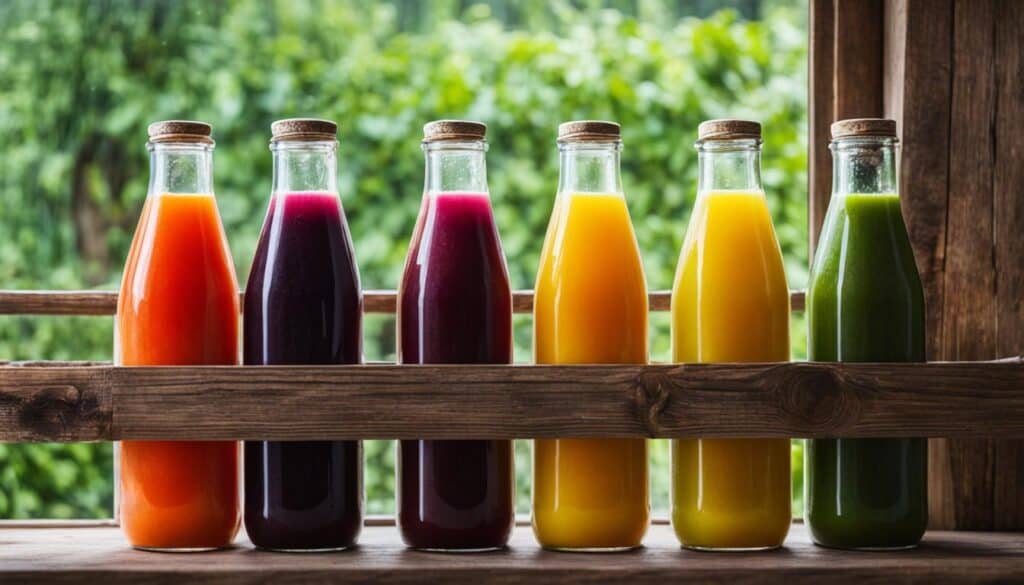
Remember, the longer you wait to consume your juice, the more it will oxidize, potentially leading to a loss of flavor and nutrients. So, seize the opportunity to savor your freshly made juice as soon as it’s ready.
Centrifugal Juicers
Centrifugal juicers are a popular choice for those seeking speed and convenience in their juicing routine. These juicers utilize high-speed spinning blades to extract juice from various fruits and vegetables, providing a quick and efficient juicing experience.
When it comes to juicing fruits, centrifugal juicers excel in their ability to process a wide range of options. From juicy oranges and sweet apples to refreshing berries, these juicers can effortlessly extract juice from most fruits, delivering a flavorful and refreshing beverage.
However, it’s important to note that centrifugal juicers may encounter some difficulties when juicing vegetables, particularly leafy greens. The high-speed spinning action of the blades might not effectively extract juice from delicate greens like kale or spinach. If you are looking to incorporate a lot of leafy greens into your juicing routine, you may want to consider alternative juicer options that specialize in juicing greens.
Despite this limitation, centrifugal juicers are an excellent choice for those who prioritize speed and efficiency. If you prefer fruit-based juices and want to enjoy your fresh juice in a matter of minutes, a centrifugal juicer is the perfect option for you.
| Pros | Cons |
|---|---|
| Fast juicing speed | May struggle with leafy greens |
| Easy to use and clean | |
| Efficient for processing most fruits |
Recommended Uses for Centrifugal Juicers:
- Quickly extracting juice from fruits
- Preparing fruit-based juices
- Convenience-focused juicing
While centrifugal juicers may not be the best choice for juicing vegetables like leafy greens, their speed, ease of use, and efficiency in processing most fruits make them a popular and convenient option for many juicing enthusiasts.
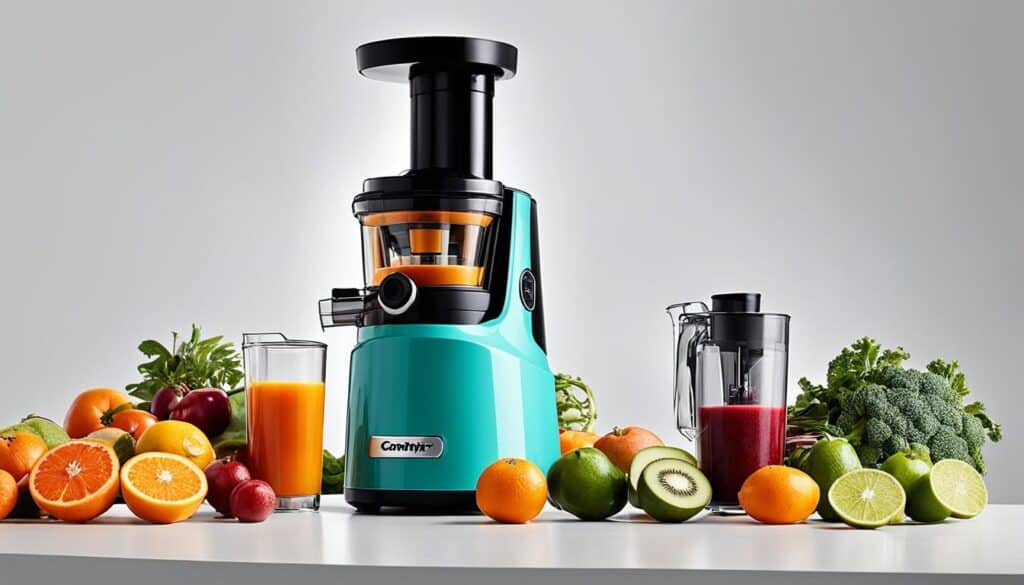
Masticating Juicers
If you’re searching for a juicer that preserves the nutritional value of your fruits and vegetables, look no further than masticating juicers, also known as cold-press juicers. Unlike their centrifugal counterparts, these slow juicers operate at a lower speed, resulting in minimal heat and oxidation.
This slow juicing process has significant benefits. By reducing heat, masticating juicers retain more vitamins, minerals, and enzymes in your juice. This means you can enjoy a glass of nutrient-rich juice that nourishes your body and supports your well-being.
One of the main advantages of masticating juicers is their ability to handle leafy greens with ease. The slow extraction process extracts every drop of juice from your greens, ensuring maximum yield and minimal waste. Whether it’s spinach, kale, or wheatgrass, you can be confident that your masticating juicer will provide you with vibrant green juice bursting with health benefits.
In addition to greens, masticating juicers can handle a wide variety of fruits and vegetables. From juicy apples and citrus fruits to dense carrots and beets, these versatile machines can handle it all. You can let your creativity flow and experiment with different combinations of ingredients to create delicious and nutritious juice blends.
When using a masticating juicer, you’ll notice that the juice has a longer shelf life compared to juice extracted by other methods. This is due to the minimal oxidation that occurs during the slow juicing process. You can prepare larger batches of juice and store them in the refrigerator, knowing that you can savor the freshness and flavors for a longer time.
So, if you’re passionate about slow juicing, extracting the maximum amount of juice from your greens, and enjoying the long-lasting freshness of your homemade creations, a masticating juicer is the perfect choice for you.
With a masticating juicer, you can embrace the wholesome goodness of slow juicing and elevate your juicing experience to new heights.
Twin Gear Juicers
Twin gear juicers are a top choice for juicing enthusiasts seeking exceptional juice extraction and maximum juicing efficiency. These robust juicers utilize two gears to crush and grind produce, ensuring every drop of juice is extracted with optimal efficiency.
One of the key advantages of twin gear juicers is their ability to handle a wide range of fruits and vegetables. Whether you’re juicing fibrous greens like kale and spinach or juicy fruits like apples and citrus, these juicers can handle it all.
Although twin gear juicers may require a bit more effort to assemble and clean compared to other juicer types, their exceptional juice quality and high yield make them well worth considering. The thorough extraction process results in nutrient-rich, vibrant juices that will delight your taste buds and nourish your body.
| Benefits of Twin Gear Juicers | Considerations for Twin Gear Juicers |
|---|---|
|
|
When it comes to investing in a twin gear juicer, it’s important to weigh the benefits with the considerations. If you value high juice extraction efficiency and prioritize nutrient-rich juices, a twin gear juicer is an excellent choice for your juicing needs.
Conclusion
After going through this comprehensive guide on manual fruit and vegetable juicers, you now have a clear understanding of how to choose the best juicer for your needs. Whether you’re looking for the top-rated juicer, the most efficient juicer, or an affordable manual juicer, weighing your options is essential.
Consider factors like juicing speed, juice extraction efficiency, and ease of cleaning when making your decision. If you prefer quick juicing and mainly juice fruits, a centrifugal juicer might be the right choice for you. However, if you’re interested in juicing leafy greens and maximizing nutritional value, a masticating juicer is worth considering.
For those seeking the utmost efficiency and a variety of juicing possibilities, a twin gear juicer is an excellent option. Though it may require additional effort for assembly and cleaning, its high juice yield and quality make it a top contender. Ultimately, the best manual juicer is the one that aligns with your preferences and lifestyle, bringing the joy of fresh, homemade juices to your table.
FAQ
What types of produce can I juice with a manual juicer?
You can juice a variety of fruits like apples, berries, citrus fruits, and melons. For vegetables, popular choices include beets, broccoli, carrots, celery, kale, spinach, and tomatoes.
How should I prepare my produce before juicing?
Properly preparing your produce is essential for getting the best results. You’ll need to chop fruits and vegetables into manageable pieces that fit through the juicer’s small food chute. For citrus fruits, peel away tough outer skins, peels, and pith to avoid adding bitter flavors to your juice. Additionally, remove any seeds and hard pits, as they can damage the juicer and create a bitter taste in the juice.
Can a manual juicer extract juice from leafy greens?
While manual juicers are great for processing most fruits and vegetables, they may have difficulty extracting juice from leafy greens. If you plan on juicing fibrous vegetables like kale and spinach, consider investing in a cold-press juicer. These machines use powerful augers to slowly crush produce, resulting in higher juice yield and better extraction from tougher ingredients.
How can I make cleanup easier when using a manual juicer?
To make cleanup easier, line the pulp collection bin of your juicer with plastic wrap. After juicing, simply remove the plastic wrap with the pulp and throw it away. This eliminates the need for scrubbing and ensures a quick and hassle-free cleanup process.
How long can I store freshly made juice?
Freshly made juice is at its peak in terms of flavor and nutritional value. It’s best to drink your juice right away to enjoy its full benefits. If you need to store juice, make sure to refrigerate it and consume it within 24 hours. To maintain optimal freshness and minimize oxidation, it’s recommended to drink your juice as soon as possible after juicing.
What are the advantages of using a centrifugal juicer?
Centrifugal juicers are popular for their speed and ease of use. These juicers use high-speed spinning blades to extract juice from fruits and vegetables. While they are efficient at processing most fruits, they may struggle with leafy greens. Centrifugal juicers are a great option for those who prioritize quick juicing and prefer fruit-based juices over greens.
What are the benefits of using a masticating juicer?
Masticating juicers, also known as cold-press juicers, operate at a slower speed compared to centrifugal juicers. This slow juicing process minimizes heat and oxidation, resulting in higher nutritional value and longer juice shelf life. Masticating juicers are especially recommended for those interested in juicing leafy greens and extracting the maximum amount of juice from their produce.
How does a twin gear juicer work?
Twin gear juicers use two gears to crush and grind produce, extracting juice with optimal efficiency. These juicers are ideal for juicing both fruits and vegetables, offering a wide range of juicing possibilities. While they may require a bit more effort to assemble and clean, their juice quality and high yield make them worth considering.
What factors should I consider when choosing a manual juicer?
When choosing a manual juicer, consider factors such as juicing speed, juice extraction efficiency, and ease of cleaning. Select a juicer that fits your needs and preferences, whether it’s a centrifugal, masticating, or twin gear juicer.
What is the best manual juicer to buy?
The best manual juicer to buy depends on your specific requirements and budget. Do some research, read reviews, and compare different models to find the one that suits you best. Look for juicers that have high ratings, are durable, easy to clean, and offer good value for money.

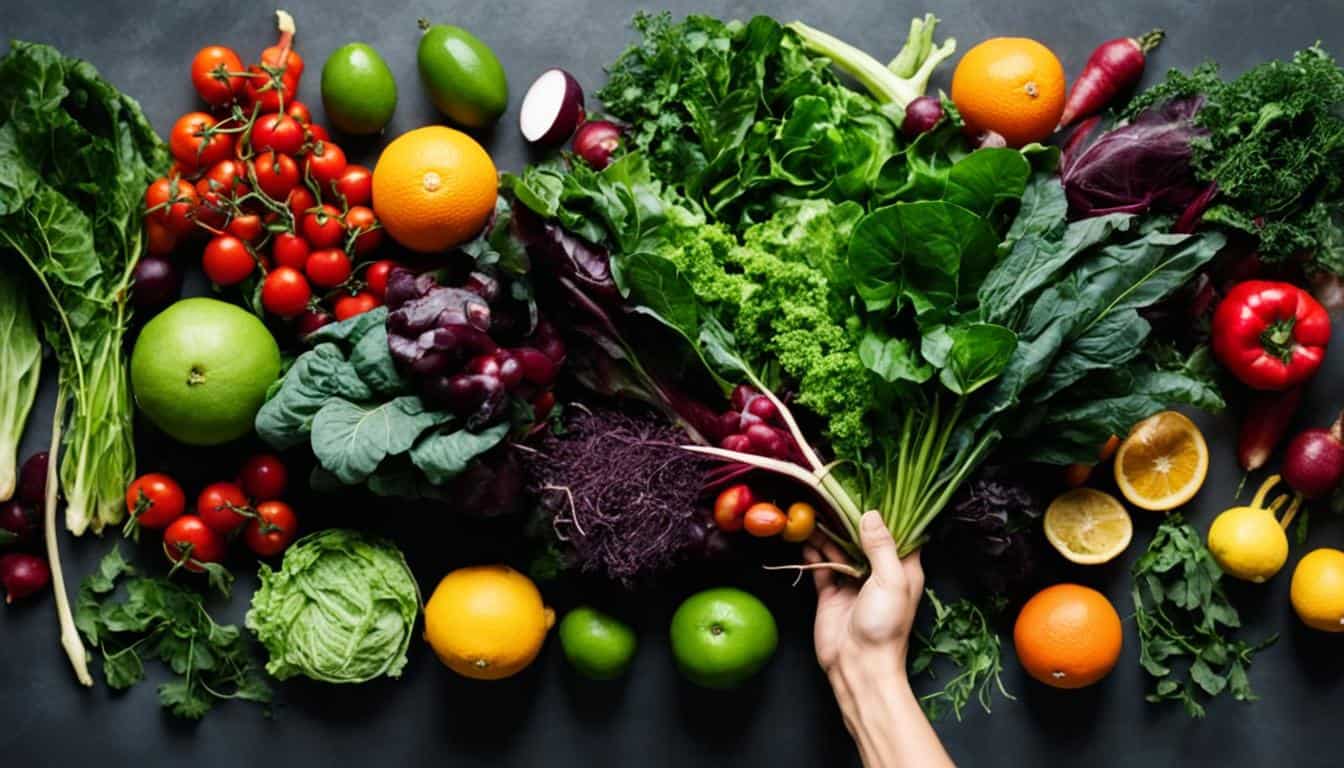

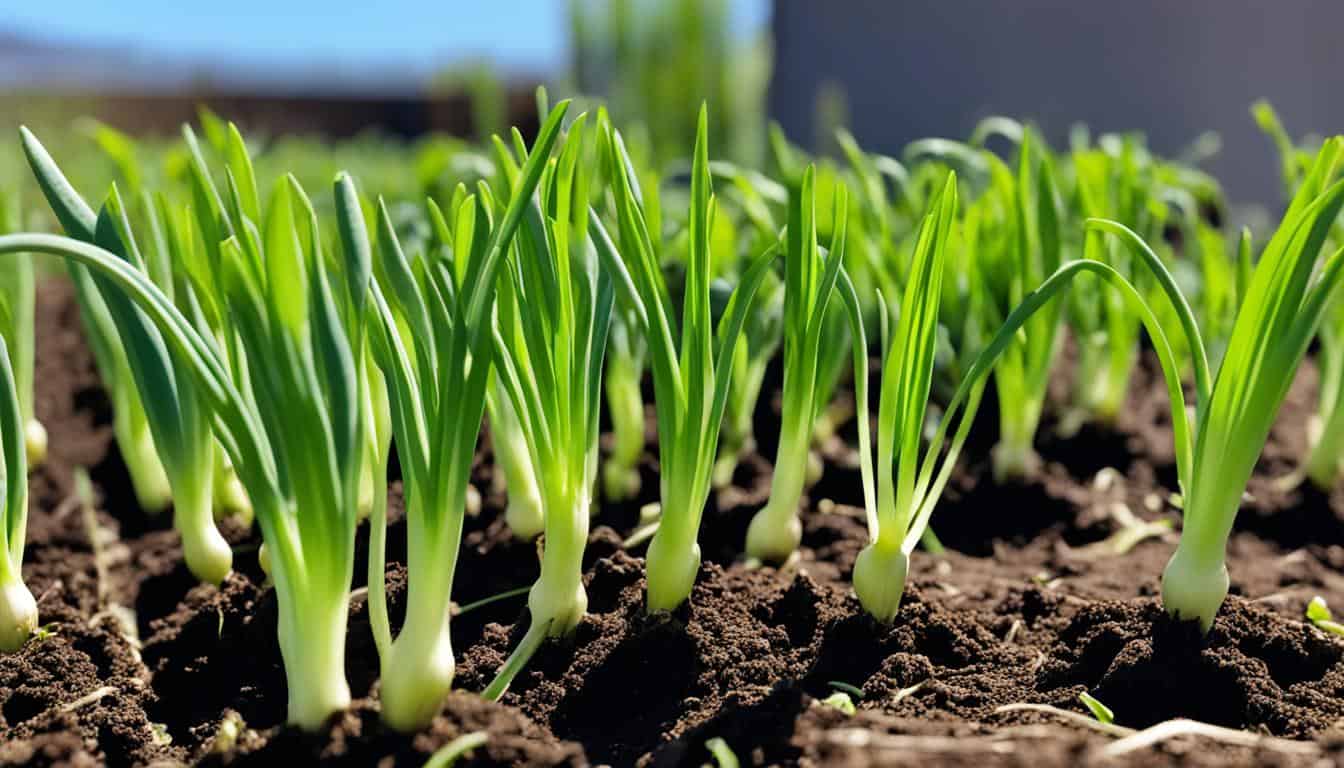
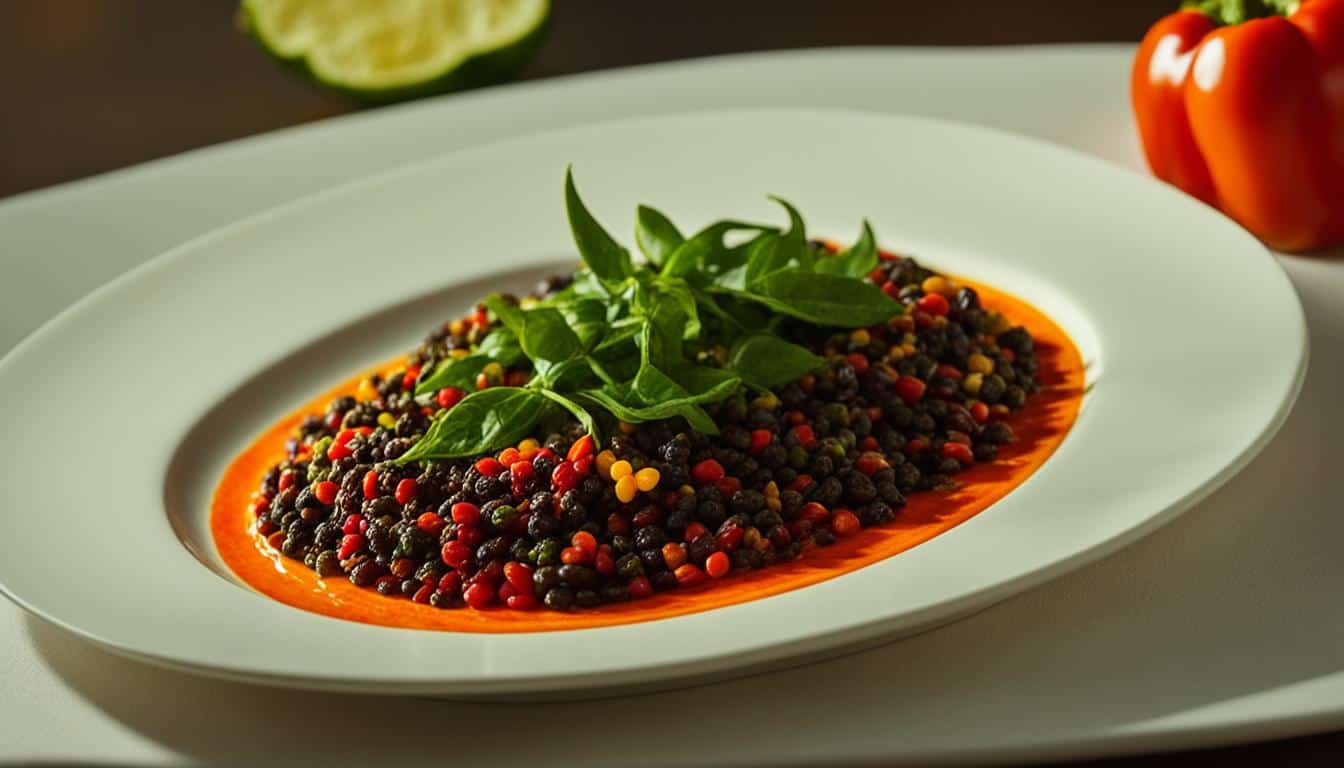
Leave a Reply